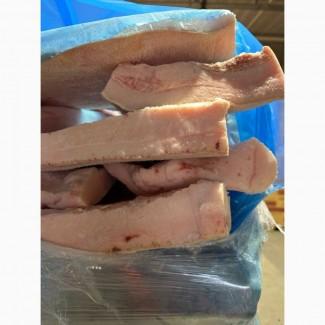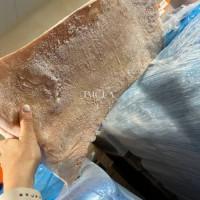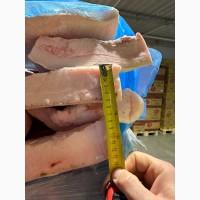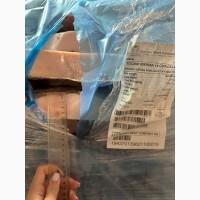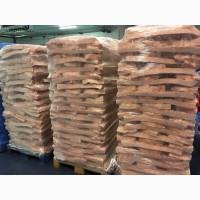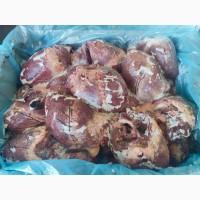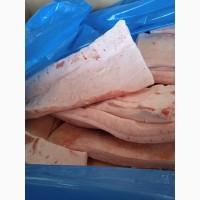Продам / купити
I will sell Iberian lard from Spain from a distributor, Lviv region.
Region:all of Ukraine,
Lviv region region.
(Lutsk)
Updated:
I will sell pork lard from a distributor. Iberika from Spain Stored in the refrigerator. We release from 1 ton to 20 tons.
Company representative. My phone numbers are +380502711484, WhatsApp and +380969351156, Viber Oleksandr. The slaughter weight of pigs is divided into food and technical products. In addition, endocrine-enzymatic and special raw materials are allocated.
Food products for slaughtering pigs:
- carcass (meat on the bone) - the body of a pig without skin or processed by the method of burning in the skin, as well as with the rump removed, without the head, legs, internal organs and internal fat;
-offals of the first category -liver, kidneys, tongue, offal, brains, heart;|| |166
- субпродукти другої категорії - шлунок, калтик, хвіст, легені, трахея, селезінка, ноги, вуха, голова без язику і мозку;
- raw fat - adipose tissue obtained during the processing of pigs is the raw material for the production of rendered fats.
The composition of raw fat includes internal fat, lard, stomach and intestinal fat; internal fat - raw fat, removed from the internal organs of pigs; lard - subcutaneous fat of pigs; pork fat - the remainder of subcutaneous fat, removed from the inner side of the pork skin; intestinal fat - fat removed from all types of intestines.
Technical products for pig slaughter:
- pig skin - freed from fat and marginal areas;
- technical blood - blood unsuitable for food purposes, but approved by veterinary and sanitary supervision for fodder purposes;
- technical rendered fat - animal fat obtained from unfit for food raw fat, approved by veterinary and sanitary supervision for use for fodder and technical purposes;
- non-food raw materials from the slaughter of pigs, used for the production of dry fodder of animal origin - scrapings from carcasses, genital organs, embryos, waste obtained from the processing of offal and intestines.
Endocrine, enzyme and special raw materials:
- endocrine raw materials - glands of internal secretion and some glands with internal and external secretion are raw materials for the production of organ preparations;
- enzyme raw materials - glands with only external secretion, as well as organs and other raw materials of animal origin, used for the production of enzymes and enzyme preparations;
- special raw materials - some types of animal organs and tissues used for the production of organoleptic drugs. Special raw materials include liver, blood, bile, spinal cord, vitreous body of the eyes, embryos, etc.
The fat content of pig carcasses is determined by the thickness of the subcutaneous fat above the spinous processes of the 6-7th. Carcasses of the first category must have a thickness of subcutaneous fat from 1.5 to 3.5 cm.
To determine the level of subcutaneous fat along the spine, measure the thickness of subcutaneous fat at the withers, above the spinous processes of the 6th-7th thoracic vertebrae, above the first lumbar vertebra and the sacrum. The average thickness of subcutaneous fat is calculated from the sum of these measurements. Fat thickness is measured with a caliper or a ruler with an accuracy of 1 mm (without skin thickness).
The quality of meat is understood as a set of properties that reveal the suitability of meat for food, they include indicators of completeness (nutritional and biological) and sanitary-veterinary safety (good quality and safety).
Good quality means the absence of spoilage processes (rotting, oxidation, rancidity, moldiness, etc.) in the meat. Safety indicators - the absence of bacteriological, chemical, mechanical pathogens (pathogenic microbes, fungi, helminths, toxins, mechanical impurities, etc.) in the meat.
Detection of all these indicators during meat examination is a veterinary and sanitary evaluation of livestock products.
The main indicators of meat quality, which are of certain interest to the consumer, are - color, taste, aroma, juiciness and tenderness of meat. In modern conditions, the quality of meat is assessed comprehensively - quality and safety. Only such a comprehensive assessment can guarantee the sanitary quality of meat.
In accordance with modern international requirements for the quality and safety of food products in connection with the need for the production and sale of products of animal origin of good quality in veterinary and sanitary terms, the State Department of Veterinary Medicine approved the mandatory minimum research of raw materials, products of animal and plant origin, which should be carried out in veterinary laboratories.
The presence of coloring substances in the meat (90% myoglobin and 10% hemoglobin) mainly determines the color of the meat. The intensity of the color of meat depends on the type, breed, sex, age, method of animal fattening, as well as the conditions and duration of storage and the processes of its ripening. The color of the meat depends to some extent on the pH. Pork at a pH of 5.6 has a pinkish-red color, and at a pH of 6.5 and above it is darker. The pink-red color of pork corresponds to good bleeding of the carcass and fresh meat. The appearance of green color is associated with the formation of sulfomyoglobin as a result of the reaction of myoglobin with hydrogen sulfide, which is formed during the breakdown of sulfur-containing proteins by microflora.(//tractor-service.com)
The main indicators of the quality of meat are its taste and aroma, which are formed due to the content and a certain ratio in the meat of extractive substances, which are easily oxidized, as they are unstable to high temperatures. The taste and aroma also depends on the age, sex of animals, the ratio of tissues, the amount and placement of fat, etc. In the meat of young animals, these qualitative indicators are less evident in comparison with the meat of adult animals. The taste of meat obtained from overtired animals deteriorates.
The smell or taste of meat can also depend on the sex of the animals (boar, wild boar), the composition of the diet, especially when feeding fish meal and fish waste.
The consistency of the meat depends mainly on its tenderness, juiciness and softness. It was established that juiciness, tenderness, taste and other commercial and technological properties depend on the moisture-retaining features of meat. Therefore, knowledge of these features of meat in its various states and during storage is of important practical importance. Meat of a darker color, more juicy, loses less weight during cooking. A high pH value increases the moisture-retaining property of meat. At a pH of 6.8, the tenderness of the meat is most evident and decreases when the marbling of the meat decreases.
The nutritional value of meat is the property of its chemical composition to meet the formula of a balanced diet (protein 1, fats 1.2, carbohydrates 4.6). The nutritional value of meat is found in its content of proteins, fats, vitamins, minerals, extractives and other biologically active substances.
The biological value of meat is characterized by the quality of its protein components and is manifested by the degree of retention of meat nitrogen in the body of growing animals.
It depends on the amino acid composition of meat proteins, its balance, digestibility and other structural features of proteins.
The energy value of meat is determined by the part of the energy that is released from the meat in the process of biological oxidation and provides the physiological functions of the body (kcal or kJ)
The standard applies to pork meat in carcasses and semi-carcasses, pig meat intended for retail trade, public catering networks and for industrial processing for food purposes.
Marking of pork is carried out with appropriate forms of stamps: the first category (bacon) - with a round stamp with a diameter of 40 mm; the second category (meat) - with a square stamp with a side size of 40 mm;
the third category (bold) - with an oval stamp with a diameter of D1 - 60 mm and D2 - 40 mm;
the fourth category (industrial processing) - with a triangular stamp with a side size of 45-50 mm;
the fifth category (meat of piglets) - with a round stamp with a diameter of 40 mm with the letter "M" 20 mm high on the right side of the stamp.
Anatomical boundaries of carcass processing include:
1 - shoulder blades. Branch boundaries pass; a) back - along a straight line between the fifth and sixth dorsal vertebrae with the intersection of the ribs; b) lower - through the elbow joint.
2 - dorsal part. The boundaries of the departments are: a) front - along the line of separation of the part of the scapula; b) back - in front of the first lumbar vertebra; y) lower - across the ribs at about half their width.
3 -breast. The boundaries of the departments are: a) front - along the line of separation of the part of the scapula; b) rear - behind the last rib; y) upper - along the line of separation of the dorsal part.
4 - lumbar part with a pashmina. The boundaries of the departments pass: a) front - along the line of separation of the dorsal part and the sternum; b) posteriorly - along a straight line passing between the last and penultimate lumbar vertebrae directly in front of the pelvic bone.
5 - around The boundaries of the sections pass: a) front - along the line of the division of the lumbar part with the groin; b) back - along the line of separation of the ankle.
6 - forearm (handlebar). Separates in a straight line through the shoulder joint.
7 - golyashka. It separates from the periosteum in the transverse direction through the upper third of the tibia.
Pork is characterized by high nutritional value. it is used for the preparation of first and second courses, a large assortment of sausages, bones, ham, roll, pork, loin, brisket and many other products that are in demand among the population. It is well preserved by salting and smoking. Low-salt pork, stewed meat and other canned goods retain their attractive appearance and good taste for a long time. The digestibility of pork reaches 95%, lard - 98%. The calorie content of 1 kg of medium fattened pork is 8100 kcal, while medium fattened beef and lamb - respectively 1500-1550 and 12001300 kcal.
Energy value
100 g, kJ, g per 100 g of product
Compared to beef and lamb, pork contains less water and more dry matter. In addition, pigs are characterized by a higher slaughter yield. Yes, a mass of meat on bones (without head, legs, neck.
Company representative. My phone numbers are +380502711484, WhatsApp and +380969351156, Viber Oleksandr. The slaughter weight of pigs is divided into food and technical products. In addition, endocrine-enzymatic and special raw materials are allocated.
Food products for slaughtering pigs:
- carcass (meat on the bone) - the body of a pig without skin or processed by the method of burning in the skin, as well as with the rump removed, without the head, legs, internal organs and internal fat;
-offals of the first category -liver, kidneys, tongue, offal, brains, heart;|| |166
- субпродукти другої категорії - шлунок, калтик, хвіст, легені, трахея, селезінка, ноги, вуха, голова без язику і мозку;
- raw fat - adipose tissue obtained during the processing of pigs is the raw material for the production of rendered fats.
The composition of raw fat includes internal fat, lard, stomach and intestinal fat; internal fat - raw fat, removed from the internal organs of pigs; lard - subcutaneous fat of pigs; pork fat - the remainder of subcutaneous fat, removed from the inner side of the pork skin; intestinal fat - fat removed from all types of intestines.
Technical products for pig slaughter:
- pig skin - freed from fat and marginal areas;
- technical blood - blood unsuitable for food purposes, but approved by veterinary and sanitary supervision for fodder purposes;
- technical rendered fat - animal fat obtained from unfit for food raw fat, approved by veterinary and sanitary supervision for use for fodder and technical purposes;
- non-food raw materials from the slaughter of pigs, used for the production of dry fodder of animal origin - scrapings from carcasses, genital organs, embryos, waste obtained from the processing of offal and intestines.
Endocrine, enzyme and special raw materials:
- endocrine raw materials - glands of internal secretion and some glands with internal and external secretion are raw materials for the production of organ preparations;
- enzyme raw materials - glands with only external secretion, as well as organs and other raw materials of animal origin, used for the production of enzymes and enzyme preparations;
- special raw materials - some types of animal organs and tissues used for the production of organoleptic drugs. Special raw materials include liver, blood, bile, spinal cord, vitreous body of the eyes, embryos, etc.
The fat content of pig carcasses is determined by the thickness of the subcutaneous fat above the spinous processes of the 6-7th. Carcasses of the first category must have a thickness of subcutaneous fat from 1.5 to 3.5 cm.
To determine the level of subcutaneous fat along the spine, measure the thickness of subcutaneous fat at the withers, above the spinous processes of the 6th-7th thoracic vertebrae, above the first lumbar vertebra and the sacrum. The average thickness of subcutaneous fat is calculated from the sum of these measurements. Fat thickness is measured with a caliper or a ruler with an accuracy of 1 mm (without skin thickness).
The quality of meat is understood as a set of properties that reveal the suitability of meat for food, they include indicators of completeness (nutritional and biological) and sanitary-veterinary safety (good quality and safety).
Good quality means the absence of spoilage processes (rotting, oxidation, rancidity, moldiness, etc.) in the meat. Safety indicators - the absence of bacteriological, chemical, mechanical pathogens (pathogenic microbes, fungi, helminths, toxins, mechanical impurities, etc.) in the meat.
Detection of all these indicators during meat examination is a veterinary and sanitary evaluation of livestock products.
The main indicators of meat quality, which are of certain interest to the consumer, are - color, taste, aroma, juiciness and tenderness of meat. In modern conditions, the quality of meat is assessed comprehensively - quality and safety. Only such a comprehensive assessment can guarantee the sanitary quality of meat.
In accordance with modern international requirements for the quality and safety of food products in connection with the need for the production and sale of products of animal origin of good quality in veterinary and sanitary terms, the State Department of Veterinary Medicine approved the mandatory minimum research of raw materials, products of animal and plant origin, which should be carried out in veterinary laboratories.
The presence of coloring substances in the meat (90% myoglobin and 10% hemoglobin) mainly determines the color of the meat. The intensity of the color of meat depends on the type, breed, sex, age, method of animal fattening, as well as the conditions and duration of storage and the processes of its ripening. The color of the meat depends to some extent on the pH. Pork at a pH of 5.6 has a pinkish-red color, and at a pH of 6.5 and above it is darker. The pink-red color of pork corresponds to good bleeding of the carcass and fresh meat. The appearance of green color is associated with the formation of sulfomyoglobin as a result of the reaction of myoglobin with hydrogen sulfide, which is formed during the breakdown of sulfur-containing proteins by microflora.(//tractor-service.com)
The main indicators of the quality of meat are its taste and aroma, which are formed due to the content and a certain ratio in the meat of extractive substances, which are easily oxidized, as they are unstable to high temperatures. The taste and aroma also depends on the age, sex of animals, the ratio of tissues, the amount and placement of fat, etc. In the meat of young animals, these qualitative indicators are less evident in comparison with the meat of adult animals. The taste of meat obtained from overtired animals deteriorates.
The smell or taste of meat can also depend on the sex of the animals (boar, wild boar), the composition of the diet, especially when feeding fish meal and fish waste.
The consistency of the meat depends mainly on its tenderness, juiciness and softness. It was established that juiciness, tenderness, taste and other commercial and technological properties depend on the moisture-retaining features of meat. Therefore, knowledge of these features of meat in its various states and during storage is of important practical importance. Meat of a darker color, more juicy, loses less weight during cooking. A high pH value increases the moisture-retaining property of meat. At a pH of 6.8, the tenderness of the meat is most evident and decreases when the marbling of the meat decreases.
The nutritional value of meat is the property of its chemical composition to meet the formula of a balanced diet (protein 1, fats 1.2, carbohydrates 4.6). The nutritional value of meat is found in its content of proteins, fats, vitamins, minerals, extractives and other biologically active substances.
The biological value of meat is characterized by the quality of its protein components and is manifested by the degree of retention of meat nitrogen in the body of growing animals.
It depends on the amino acid composition of meat proteins, its balance, digestibility and other structural features of proteins.
The energy value of meat is determined by the part of the energy that is released from the meat in the process of biological oxidation and provides the physiological functions of the body (kcal or kJ)
The standard applies to pork meat in carcasses and semi-carcasses, pig meat intended for retail trade, public catering networks and for industrial processing for food purposes.
Marking of pork is carried out with appropriate forms of stamps: the first category (bacon) - with a round stamp with a diameter of 40 mm; the second category (meat) - with a square stamp with a side size of 40 mm;
the third category (bold) - with an oval stamp with a diameter of D1 - 60 mm and D2 - 40 mm;
the fourth category (industrial processing) - with a triangular stamp with a side size of 45-50 mm;
the fifth category (meat of piglets) - with a round stamp with a diameter of 40 mm with the letter "M" 20 mm high on the right side of the stamp.
Anatomical boundaries of carcass processing include:
1 - shoulder blades. Branch boundaries pass; a) back - along a straight line between the fifth and sixth dorsal vertebrae with the intersection of the ribs; b) lower - through the elbow joint.
2 - dorsal part. The boundaries of the departments are: a) front - along the line of separation of the part of the scapula; b) back - in front of the first lumbar vertebra; y) lower - across the ribs at about half their width.
3 -breast. The boundaries of the departments are: a) front - along the line of separation of the part of the scapula; b) rear - behind the last rib; y) upper - along the line of separation of the dorsal part.
4 - lumbar part with a pashmina. The boundaries of the departments pass: a) front - along the line of separation of the dorsal part and the sternum; b) posteriorly - along a straight line passing between the last and penultimate lumbar vertebrae directly in front of the pelvic bone.
5 - around The boundaries of the sections pass: a) front - along the line of the division of the lumbar part with the groin; b) back - along the line of separation of the ankle.
6 - forearm (handlebar). Separates in a straight line through the shoulder joint.
7 - golyashka. It separates from the periosteum in the transverse direction through the upper third of the tibia.
Pork is characterized by high nutritional value. it is used for the preparation of first and second courses, a large assortment of sausages, bones, ham, roll, pork, loin, brisket and many other products that are in demand among the population. It is well preserved by salting and smoking. Low-salt pork, stewed meat and other canned goods retain their attractive appearance and good taste for a long time. The digestibility of pork reaches 95%, lard - 98%. The calorie content of 1 kg of medium fattened pork is 8100 kcal, while medium fattened beef and lamb - respectively 1500-1550 and 12001300 kcal.
Energy value
100 g, kJ, g per 100 g of product
Compared to beef and lamb, pork contains less water and more dry matter. In addition, pigs are characterized by a higher slaughter yield. Yes, a mass of meat on bones (without head, legs, neck.
|
Shop, contacts | |
Alexander / | ||249відгуки, інфо.: 23/ activity rating Attention! The user has a lot ofnegative feedback | |
|
Phone:
+380xxxxx
show
| |
| Skype: potapsan | |
All user ads ~273 | |
Ad ID: #1312919
(added by a registered user, registration date: 08-14-2012)
Added / Updated: 09-22-2024 19:27 (current, until: 09-22-2025)
Permanent Ad Address:
Shows / views for today: ?, total: ?
Similar ads
There are many interesting...
Filters: Pork Loin / Loin Pork Brisket Back of Pork Pork Shoulder|| |353 Ніжки свинячі Pork loin Pork liver Pork lard Pork heart Pork offal
